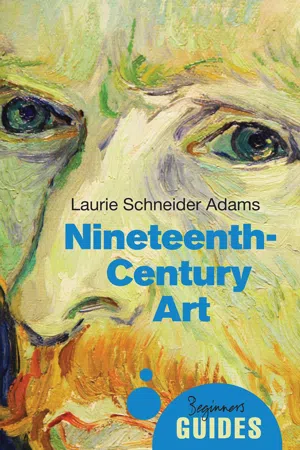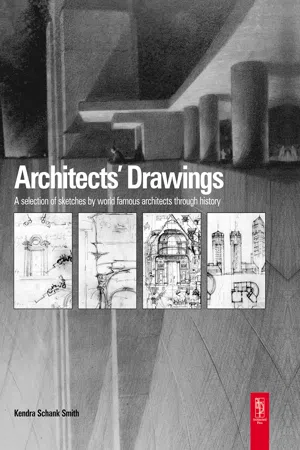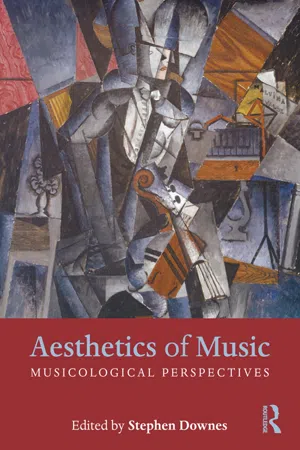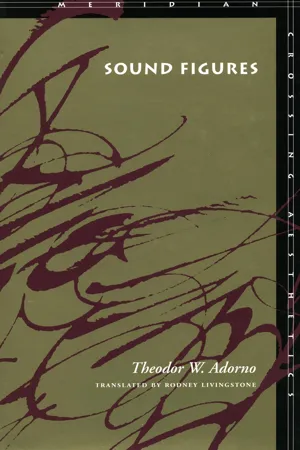History
Neoclassicism
Neoclassicism was an artistic and intellectual movement that emerged in the 18th century, drawing inspiration from classical Greek and Roman art and culture. It emphasized rationality, order, and restraint, seeking to revive the principles of ancient art and literature. Neoclassical works often featured clean lines, symmetry, and a focus on moral themes, reflecting a desire to emulate the perceived virtues of antiquity.
Written by Perlego with AI-assistance
Related key terms
7 Key excerpts on "Neoclassicism"
- eBook - ePub
Literary Culture in Early Modern England, 1630–1700
Angles of Contingency
- Ingo Berensmeyer(Author)
- 2020(Publication Date)
- De Gruyter(Publisher)
Are early modern developments merely the prehistory of an ‘autonomous’ literature? How are we to understand this? Traditionally, many literary histories locate decisive developments in the eighteenth century: together, these constitute the emergence of a modern framework in which literature works. There is no doubt that a number of important, or even essential, cultural achievements of the eighteenth century indeed depend on earlier developments; but I think it would be wrong simply to regard the seventeenth century as a mere way station towards something else or as the imperfect precursor of something less imperfect. I think the more rewarding task is to focus on seventeenth-century events in their own light, to present these processes in relation to their own ‘contexture’ – to view them not against the horizon of a ‘no longer’ or a ‘not yet’, but to come to understand them on their own terms.This problem of literary historiography becomes particularly intense with regard to two major movements: empiricism and Neoclassicism. These intellectual and artistic formations tend to be interpreted, retrospectively, as precursors of later developments: Enlightenment rationalism on the one hand, the aesthetic autonomy of the literary on the other. Indeed, if you look at it as a literary theory, and perhaps the first explicitly literary theory in modern Europe, Neoclassicism can be read as a response to an increasing differentiation of discourses, media, and forms of communication. Such differentiation constitutes a core element of its critical reflections on the arts. Neoclassicism is not merely the result of a rediscovery or reappraisal of classical literary traditions. The ‘re’ as ‘neo’: the name implies this of course, and like the term ‘Renaissance’, meaning ‘rebirth’, Neoclassicism is a return to classicism, to classical traditions (Berensmeyer 2019 ). Among other important aspects, Neoclassicism embodies a tendency to look at works of literature in isolation and to relate them to an abstract matrix of normative foundations. In other words, it seeks to read, to decipher the code of any literary work and to establish a critical discourse of value on the basis of this code: is this tragedy a good tragedy according to the norm that Aristotle has established in classical Greece? Relating the individual work to an abstract norm on the basis of a code, a kind of normative decorum, Neoclassicism seeks to turn individual objects into cases that can be subsumed under general principles. In England, in distinction to French Neoclassicism and in analogy to English law, distinctions between abstract norms and individual cases are handled a bit more flexibly and are seen in relation to one another as parts of an evolving continuum (see Norton 1999 - eBook - ePub
Nineteenth-Century Art
A Beginner's Guide
- Laurie Schneider Adams(Author)
- 2014(Publication Date)
- Oneworld Publications(Publisher)
Neoclassicism began as an expression of Enlightenment philosophy and the principles of democracy. Called the “True Style” in France, Neoclassicism provided a moral dimension to iconography and was inspired by a formal interest in the styles of ancient Greece and Rome. In painting and sculpture, Neoclassical artists preferred the clear edges, smooth paint handling, lifelike figures, and antique subject matter they saw in Roman art. In architecture, ancient Greek and Roman elements were revived. Such choices harked back to an age associated with more democratic societies – the Roman Republic and fifth-century BCE Athens – than the European monarchies. But despite having begun as a style of revolutionary sentiment – notably that of the French Revolution of 1789 – Neoclassicism became an imperial style under Napoleon. As such it was used to project his image as a legitimate ruler in the tradition of Roman emperors. Architecture In England, the eighteenth-century architectural revival of antiquity began with Palladianism, which rejected the Rococo levity of the previous century in favor of more austere Classical forms. From 1725, Lord Burlington (1694–1753) began constructing Chiswick House (figure 1) on the outskirts of London. Intended as a place of relaxation and entertainment, Chiswick House was inspired by Andrea Palladio’s sixteenth-century Villa Rotonda in the northern Italian town of Vicenza. Burlington appropriated from Palladio the Greek portico, pedimented windows (surmounted here by a triangular element), a central dome, and a symmetrical façade. The columns on the portico are in the Corinthian order (figure 2), historically the latest and formally the most ornate of the three Greek orders (Doric, Ionic, and Corinthian) – types of architecture best distinguished by the forms and arrangement of their individual parts. Figure 1 Richard Boyle (Earl of Burlington), Chiswick House, 1725 –1729, London, UK - eBook - ePub
- Kendra Schank Smith(Author)
- 2006(Publication Date)
- Routledge(Publisher)
Chapter 3 Neoclassical, Neogothic, Beaux-Arts (1750–1870) DOI: 10.4324/9780080454658-4The neoclassical movement cannot be viewed as a universally consistent doctrine that dominated a specific location. Not easily definable, it was prevalent throughout Europe and extended abroad to places such as the United States and Asia. This new (and renewed) view of antiquity was subject to extensive and varied interpretation, from archaeological neoclassical, neogothic, visionary/revolutionary neoclassical, English neo-palladianism, and Greek and Roman revivals. Although an extension of methods developed in the Renaissance and baroque, sketching techniques were varied reflecting media and intent. >From the academy traditions of the Ecole des Beaux-Arts the concept of esquisse, the sketch as an organizational diagram, emerged.Most refined in France, Neoclassicism emerged out of baroque classical and was substantially transformed from that of the fifteenth century. In reaction to the apparent unrestraint of baroque architecture, neoclassical architects desired a return to what was perceived as the principles of architecture (Broadbent, 1980 ). Numerous late baroque architects never embarked upon pilgrimages to the antiquities of the south, but in the middle of the eighteenth century, James Stuart and Nicholas Revett traveled to record the antiquities of Greece. Similar versions of their findings were eventually published by Julien-David LeRoy in 1758 (Broadbent, 1980 ). This renewed view of antiquity, tempered by the rational thought of philosophers such as Decartes and Rousseau, emerged as a ‘static method of design.’ It was exemplified by principles of order, symmetry, and harmony, embodied in a French national style sponsored by the monarchy (Kaufmann, 1955 ; Trachtenberg and Hyman, 1986; Egbert, 1980 ). This restrained French classicism was partially influenced by the enlightenment ideal of humanity as innocent and rational, harking back to a perceived naïveté of early cultures and the ‘primitive hut’ (Trachtenberg and Hyman, 1986 ; Laugier, 1977 - eBook - ePub
Aesthetics of Music
Musicological Perspectives
- Stephen Downes, Stephen Downes(Authors)
- 2014(Publication Date)
- Routledge(Publisher)
Genuinely enthused by Italian styles, Philippe and those in his circle also found in them a symbolic critique of the regimentation of French politics that two centuries of absolutism had wrought (Fader 2005, 2007 ; Cowart 2008, 191–252). Hardly a revolutionary or far-reaching critique, to be sure, coming as it did from aristocratic circles and in the modulated tones of music, but a critique it nonetheless was. Conclusion: motives for classicism If musicians developed their classicism in part because of a fascination with the legacy of antiquity, in part because of a love of refinement and care for disciplinary skill, and in part in order to move within and live off of social elites, they may also have cultivated their classicism precisely because it provided a measure of balance to the world around them. In other words, classicism and Neoclassicism may involve aesthetics of restraint and refinement, order and control, but their Apollonian fruits may have sprung from Dionysian seeds. These Dionysian forces could generate large social movements. Helmut Lethen, for example, has related the ‘cool conduct’ behind the German version of Neoclassicism (New Objectivity) to the trauma experienced by Germans during and after the First World War (Lethen 2002). Dionysius could also operate on a more personal level. Before the development of modern medicine, physical ailment and the proximity of death were constants of life. Rüdiger Safranski relates that the doctors who performed an autopsy on Friedrich Schiller after his death in 1805 were amazed at the state of his organs: the lungs were like porridge, the heart without muscular substance, the gall bladder grossly swollen, and the kidneys substantially dissolved and deformed (Safranski 2004, 11). German literary classicism and philosophical idealism may owe a small debt to the intellectual fury of a man who experienced nothing but disorder in his body and could do nothing about it - eBook - ePub
The Lure of Perfection
Fashion and Ballet, 1780-1830
- Judith Bennahum(Author)
- 2005(Publication Date)
- Routledge(Publisher)
4Neoclassicism1780–1820Poem read on stage by Jean-Etienne Dépréaux (husband of Marie-Madeleine de la Guimard): On Fashion or Without Cares Thanks to the fashion way we have no more stays Ah! how happy this day as we have no more stays We take it in stride Thanks to the fashion way we have nothing to hide Ah! how happy this day. We have nothing to hide: How unfortunate that I must abide! De la mode ou Sans Gêne: Grâce à la mode on n’a plus de corset Ah! Qu’ c’est commode on n’a plus de corset: C’est plus tôt fait! Grâce à la mode on n’a rien d’caché. Ah! qu’ c’est commode, On n’a rien de caché:J’en suis fâché1Fig. 26 Statues of Elgin Marbles at The British Museum. Photo by author.Neoclassicism, or looking back to Greek and Roman times for inspiration, bridged the period of the Revolution and the Empire between the end of the eighteenth century and the beginning of the nineteenth. During this time period, in November 1799, the coup d’état of 18 Brumaire in the revolutionary calendar brought Napoléon Bonaparte to power and, in December, the Constitution of year VIII gave him authority as First Consul of France. With the coronation of Napoléon as Emperor in 1804, the fascination for things antique reached its apogée. Although Napoleon is discussed fully in the next chapter, it is important to note his presence in the Neoclassic Period.Fig. 27 Statues of Elgin Marbles at The British Museum. Photo by author.The late eighteenth-century’s fascination with classical dress paralleled its intriguing new discourse with the body and the classical body. Dressed in soft, slender drapery, women returned to an idealized, ritualized experience of democracy, of equality, and of the recognition that clothing had transformative values. The revealed body became the means through which the evolving meanings of political and social life in Greece and Rome were reinvented as circumstances changed.2 - eBook - ePub
- Theodor W. Adorno, Rodney Livingstone, Rodney Livingstone(Authors)
- 1999(Publication Date)
- Stanford University Press(Publisher)
very ideas the Neoclassicists most abhor. Only they of course deprive Novalis of his truth, the dream of a nonpresent and nonreconstructible society, which they drag down to their administered world and allow to freeze in a merely given reality.Nor does new music simply form a contrast with the nineteenth century. The summary eagerness to see just that occur is itself suspect. When past phenomena are said, without relevant explanation, to be obsolete and passé, as if the mere passage of time could be made responsible for cultural developments, the presence of unfinished business, often of a traumatic nature, is almost invariably revealed. Efforts to forget the nineteenth century aim to make us forget that the promise to emancipate mankind was never redeemed. This promise had once been announced in a subjectivism that reached deep into such frail movements as womens emancipation, but its reputation was blackened more recently by the emergence of a prefascist tendency. Today one would like to overcome that ceaselessly denounced spirit of individualism, to use that embarrassing expression, if only because its real precondition, the conflict of interests between individuals who are both alienated from and chained to one another, still endures; meanwhile, however, they are prevented from achieving individuality by the prevailing pressures and would be only too happy to present their weakness as a strength. High-sounding proclamations of order and social bonds, said to be long overdue in the realm of culture, only conceal the attempt to justify a desperate weakness. People force themselves to rationalize an act of repression. The changes that have taken place since the nineteenth century, however, cannot be interpreted as an altered style of thought or feeling that now calls for a different spiritual expression. Instead such changes can be legitimated only through criticism of the age, of the ideology of the past, though hardly by intellectuals who are assiduously concerned to make their obeisance to the so-called spirit of the age. A start should be made not with the excessive complexity and frayed quality of so-called late Romantic music, which sounds Romantic only to unsophisticated ears. What really call for correction are the kind of failings seen in Brahms, for example, where the principle of construction actually leaves the material of the music untouched, such that there is a gaping void between the two. Or again, in many instances the material has been revolutionized but the compositional methods fail to take this properly into account and remain backward in the face of the highly differentiated material, much as Wagner’s sequencing technique does in contrast to his discoveries in harmony and orchestration. In other words, if new music arose out of technical problems of the later nineteenth century, it did so as a response to questions that failed to find answers then. No doubt, all of this also has a substantive meaning that goes beyond questions of technique. The subjectivist position of so-called Romantic music was revealed as mere delusion when it became apparent that, behind the loneliness that, in Palestrina , the ideologically Romantic Pfitzner called the innermost center of the world, the rule of objectivity held sway: the principle of individuation is itself social. But movement beyond this delusion is not achieved by a change of ideology or an artistic gesture. An artistic solution is needed to settle those issues that were not settled in the nineteenth and early twentieth centuries because of the weight of tradition. The unfinished business related to appearances, the decorative element, the surplus of sensuous effects over their constructive justification; it was what none other than Wagner found the fitting formulation for in the middle of the nineteenth century when he talked about effects without causes. In contrast to that, all qualitatively new music undoubtedly brings an iconoclastic, anti-Romantic element to the surface. Reduction to structural essentials, elimination of inflated extras, and even an element of polemical primitiveness cannot be removed from it. But new music could no more make its home in this cult of the primitive, or nurture it, than could fauvism in painting. It was forced to define the supposedly elemental features as something mediated, as the bearer of expression, and as the precondition of the new structuring principle that it required as well. Its own logic has driven it to transcend the flirtation with the primitive which the cliché of its opposition to the nineteenth century would have wished to preserve. The distinction between polemically reduced music, such as Schoenberg’s first atonal Piano Pieces, op. II, and the complacent simplification of Neoclassic structures in Stravinsky’s Apollo Musagetes - George A. Kennedy(Author)
- 2003(Publication Date)
- The University of North Carolina Press(Publisher)
Chapter 11Neoclassical Rhetoric
In the seventeenth and eighteenth centuries rhetoric experienced new developments that were both classical and nonclassical, both a return to a better understanding of classical rhetoric and a more radical departure from the philosophical and civic assumptions of classical rhetoric. These developments are often viewed in terms of the influence of the new science, especially the new logic of Descartes and Pascal in France and of Locke and the British Empiricists, upon the understanding and exposition of rhetoric. Through the work of the Port Royalists, the schools of France, Britain, and America were directly affected in the teaching of logic, but new conceptions of rhetoric only slowly influenced teaching at elementary levels, which frequently kept to the Ciceronian tradition or to the lists of tropes and figures of Ramist rhetoric. Thomas Farnaby’s Index Rhetoricus of 1625, originally a handbook of Ciceronian rhetoric, was frequently reprinted and much used in British and American schools for over a century, but the later editions reduced it to a Ramist rhetoric of tropes and figures.1It is also possible, however, to approach the new developments in terms of the neoclassical movement that flourished in France in the reign of Louis XIV (1643–1715) and reached England after the restoration of Charles II in 1660.2 This approach is appropriate in a study of the tradition of classical rhetoric, for the history of the discipline in this period is analogous to a renewed classicism in literature and to the neoclassical movement in architecture, sculpture, and painting. Knowledge of Greek, recovered by the humanists of the fourteenth and fifteenth centuries, first produced Latin translations of Greek works, but in the sixteenth and seventeenth centuries Italian, French, and English translations of literary merit became popular, and awareness of the aesthetic superiority and originality of Greek literature was widely diffused. This new knowledge made possible the classicizing literature of the seventeenth and eighteenth centuries, seen in the dramatic works of Corneille and Racine in France and of Dryden and Addison in England, which imitate Greek models, in contrast to Shakespeare’s greater reliance on Roman and medieval forms. In the case of rhetoric, neoclassical Hellenism can be seen in the preference among intellectuals for Plato and Demosthenes over Cicero and Quintilian, already evident in Bacon, and in a new role for primary rhetoric in French and English oratory. At the same time, Latin lost ground to French and English in education, since rhetorical studies increasingly focused on training for speech and writing in the vernacular, but Latin continued to be used throughout the eighteenth century for advanced scholarship and in some reference works. Ernesti’s dictionaries of technical terms, published in Leipzig in 1795 and 1797 and still in some use today, are good examples.3
Index pages curate the most relevant extracts from our library of academic textbooks. They’ve been created using an in-house natural language model (NLM), each adding context and meaning to key research topics.






